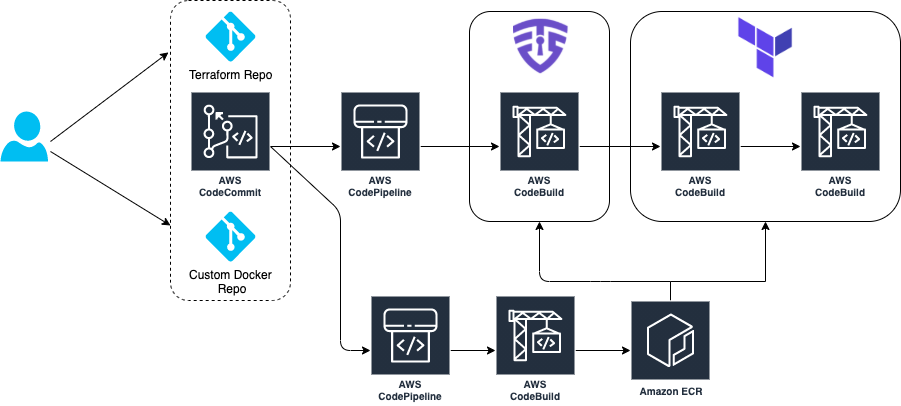AWS DevOps Blog
Tag: AWS CodeCommit
Best practices for managing Terraform State files in AWS CI/CD Pipeline
Introduction Today customers want to reduce manual operations for deploying and maintaining their infrastructure. The recommended method to deploy and manage infrastructure on AWS is to follow Infrastructure-As-Code (IaC) model using tools like AWS CloudFormation, AWS Cloud Development Kit (AWS CDK) or Terraform. One of the critical components in terraform is managing the state file which […]
Using Generative AI, Amazon Bedrock and Amazon CodeGuru to Improve Code Quality and Security
Automated code analysis plays a key role in improving code quality and compliance. Amazon CodeGuru Reviewer provides automated recommendations that can assist developers in identifying defects and deviation from coding best practices. For instance, CodeGuru Security automatically flags potential security vulnerabilities such as SQL injection, hardcoded AWS credentials and cross-site request forgery, to name a […]
Automated Code Review on Pull Requests using AWS CodeCommit and AWS CodeBuild
Pull Requests play a critical part in the software development process. They ensure that a developer’s proposed code changes are reviewed by relevant parties before code is merged into the main codebase. This is a standard procedure that is followed across the globe in different organisations today. However, pull requests often require code reviewers to […]
Multi-branch pipeline management and infrastructure deployment using AWS CDK Pipelines
February 9, 2024: Before reading this post, please note that AWS CodePipeline recently added support for Branch-based development and Monorepos simplifying the architecture discussed in this post. This post describes how to use the AWS CDK Pipelines module to follow a Gitflow development model using AWS Cloud Development Kit (AWS CDK). Software development teams often […]
CICD on Serverless Applications using AWS CodeArtifact
Developing and deploying applications rapidly to users requires a working pipeline that accepts the user code (usually via a Git repository). AWS CodeArtifact was announced in 2020. It’s a secure and scalable artifact management product that easily integrates with other AWS products and services. CodeArtifact allows you to publish, store, and view packages, list package […]
Secure and analyse your Terraform code using AWS CodeCommit, AWS CodePipeline, AWS CodeBuild and tfsec
Introduction More and more customers are using Infrastructure-as-Code (IaC) to design and implement their infrastructure on AWS. This is why it is essential to have pipelines with Continuous Integration/Continuous Deployment (CI/CD) for infrastructure deployment. HashiCorp Terraform is one of the popular IaC tools for customers on AWS. In this blog, I will guide you through […]
Use the Snyk CLI to scan Python packages using AWS CodeCommit, AWS CodePipeline, and AWS CodeBuild
Learn how to scan Python packages for security vulnerabilities using AWS Developer tools and Snyk
Keeping up with your dependencies: building a feedback loop for shared libraries
In a microservices world, it’s common to share as little as possible between services. This enables teams to work independently of each other, helps to reduce wait times and decreases coupling between services. However, it’s also a common scenario that libraries for cross-cutting-concerns (such as security or logging) are developed one time and offered to […]
Building a CI/CD pipeline to update an AWS CloudFormation StackSets
AWS CloudFormation StackSets can extend the functionality of CloudFormation Stacks by enabling you to create, update, or delete one or more stack across multiple accounts. As a developer working in a large enterprise or for a group that supports multiple AWS accounts, you may often find yourself challenged with updating AWS CloudFormation StackSets. If you’re […]
Use AWS CodeCommit to mirror an Azure DevOps repository using an Azure DevOps pipeline
AWS customers with Git repositories in Azure DevOps can automatically backup their repositories in the AWS Cloud using an AWS CodeCommit repository as a replica. By configuring an Azure DevOps pipeline, the source and replica repositories can be automatically kept in sync. When updates are pushed to the source repository, the pipeline will be triggered […]









